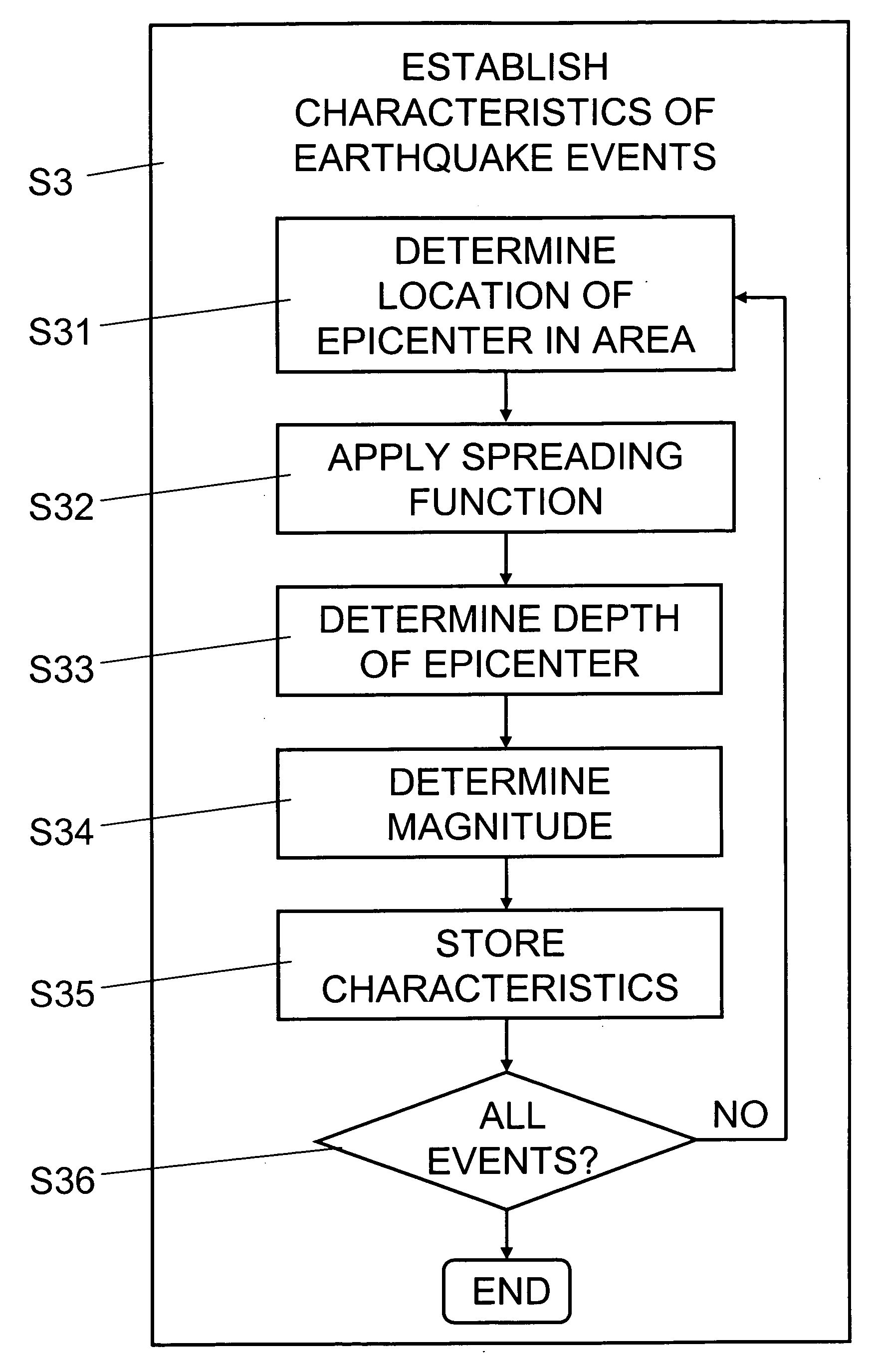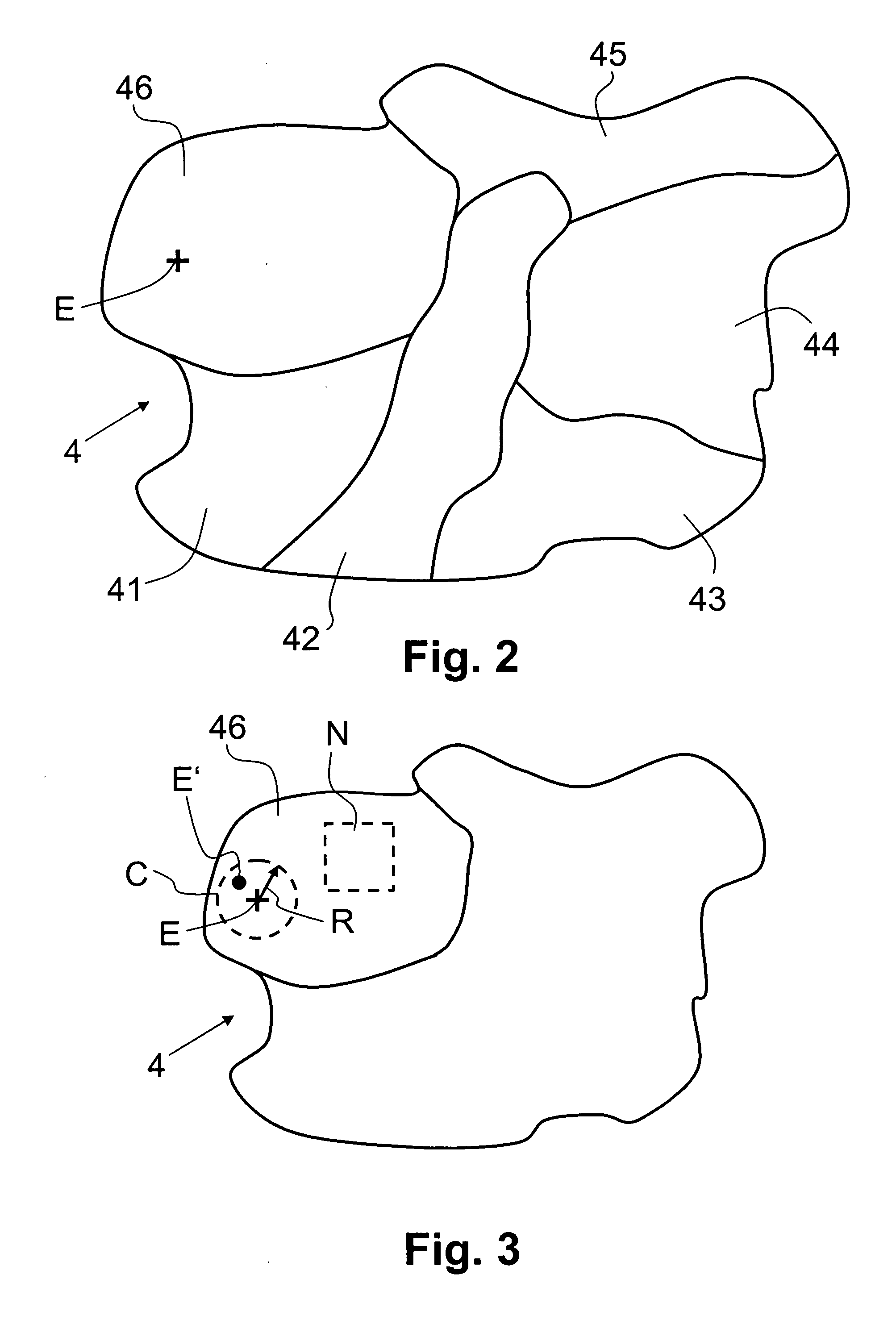System and method for providing earthquake data
a technology applied in the field of providing system and providing method for providing earthquake data, can solve the problems of many experts not believing that a system for accurately and precisely predicting individual earthquakes would be possible, and achieve the effects of high seismicity, flexible and simple parameterization, and easy maintenan
- Summary
- Abstract
- Description
- Claims
- Application Information
AI Technical Summary
Benefits of technology
Problems solved by technology
Method used
Image
Examples
Embodiment Construction
[0022] In FIG. 1, reference numeral 1 refers to a computer system for providing earthquake data for a defined area. The computer system 1 includes one or more computers 1′, for example personal computers, comprising one or more processors. Furthermore the computer system 1 includes a display 20 and data entry means such as a keyboard and a computer mouse. Optionally, the computer system 1 is connected via communication links to a peripheral earthquake simulator 2 and / or to one or more data sources 3. The earthquake simulator 2 comprises motion drivers configured to move mechanically parts of a model of a geographic area, for example. The data source 3 provides seismic parameters and includes, for example, one or more seismic measuring stations and / or data servers. As is illustrated schematically in FIG. 1, computer system 1 further includes various data stores, implemented as databases, data files and / or data tables: an earthquake catalog 21 for storing historical and instrumental e...
PUM
 Login to View More
Login to View More Abstract
Description
Claims
Application Information
 Login to View More
Login to View More - R&D
- Intellectual Property
- Life Sciences
- Materials
- Tech Scout
- Unparalleled Data Quality
- Higher Quality Content
- 60% Fewer Hallucinations
Browse by: Latest US Patents, China's latest patents, Technical Efficacy Thesaurus, Application Domain, Technology Topic, Popular Technical Reports.
© 2025 PatSnap. All rights reserved.Legal|Privacy policy|Modern Slavery Act Transparency Statement|Sitemap|About US| Contact US: help@patsnap.com



